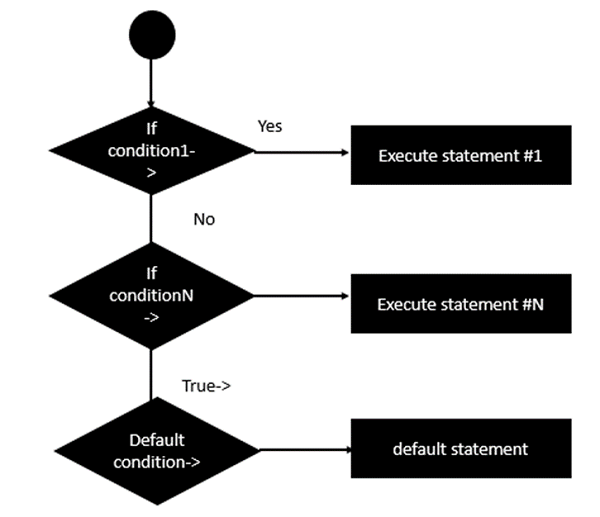Erlang多表示式
if表示式也允許進行一次評估(計算)多個表示式。在 Erlang 這個語句的一般形式顯示在下面的程式 -
語法
if condition1 -> statement#1; condition2 -> statement#2; conditionN -> statement#N; true -> defaultstatement end.
在 Erlang 中,條件是計算結果為真或假的表示式。如果條件為真,則 statement#1 會被執行。否則評估(計算)下一個條件表示式等等。如果沒有一個表示式的計算結果為真,那麼 defaultstatement 評估(計算)。
下圖是上面給出的語句的一般流程示意圖:


下面的程式是在 Erlang 中一個簡單的 if 表示式的例子 -
範例
-module(helloworld).
-export([start/0]).
start() ->
A = 5,
B = 6,
if
A == B ->
io:fwrite("A is equal to B");
A < B ->
io:fwrite("A is less than B");
true ->
io:fwrite("False")
end.
以下是上述程式需要說明的一些關鍵點 -
-
這裡所使用的表示式是變數A和B的比較
-
-> 運算子需要在表示式之後
-
符號 ";" 需要在 statement#1 語句之後
-
-> 運算子需要在 true 表示式之後
-
語句 「end」 需要用來表示 if 塊的結束
上面的程式碼的輸出結果是 -
A is less than B